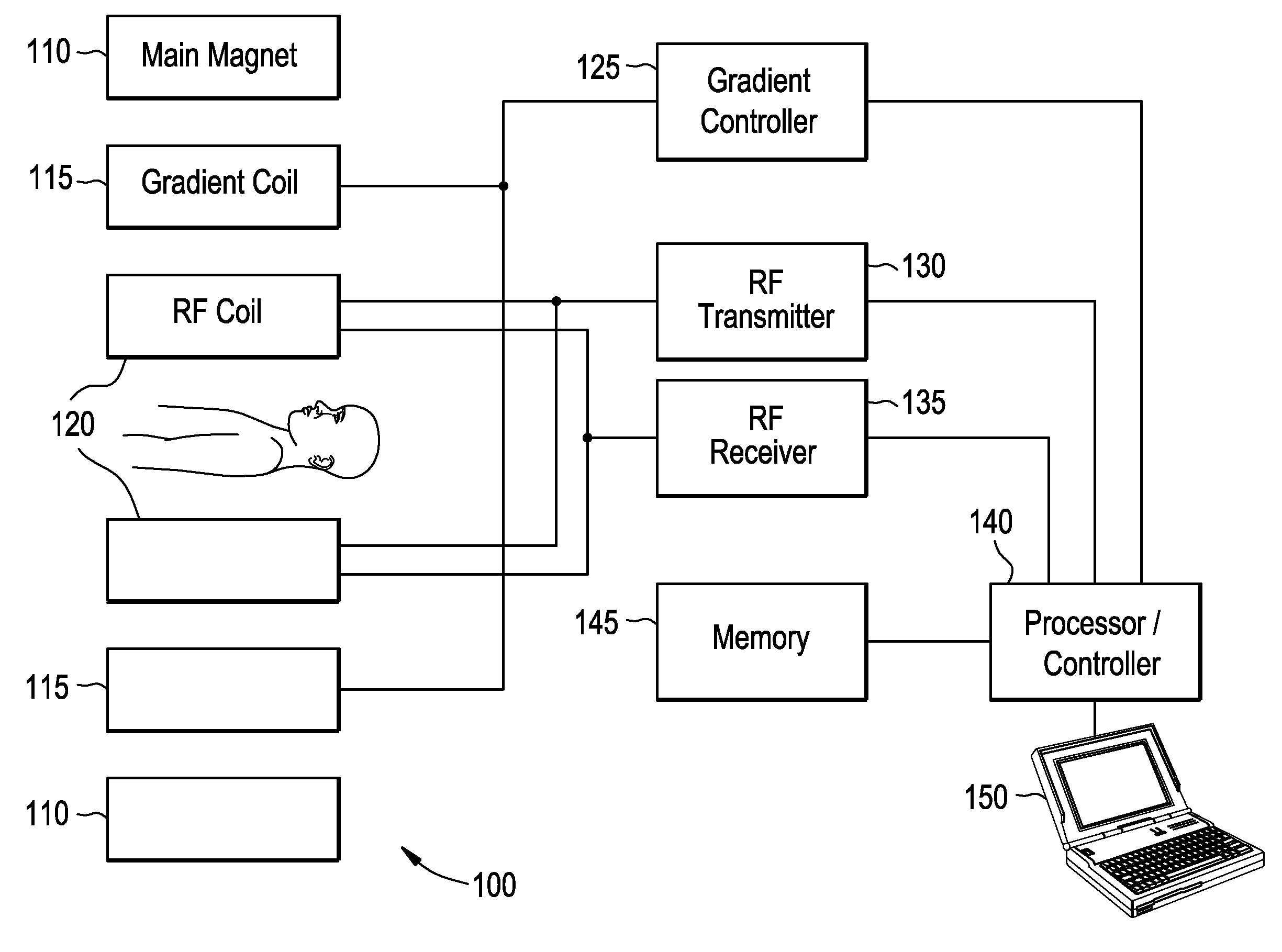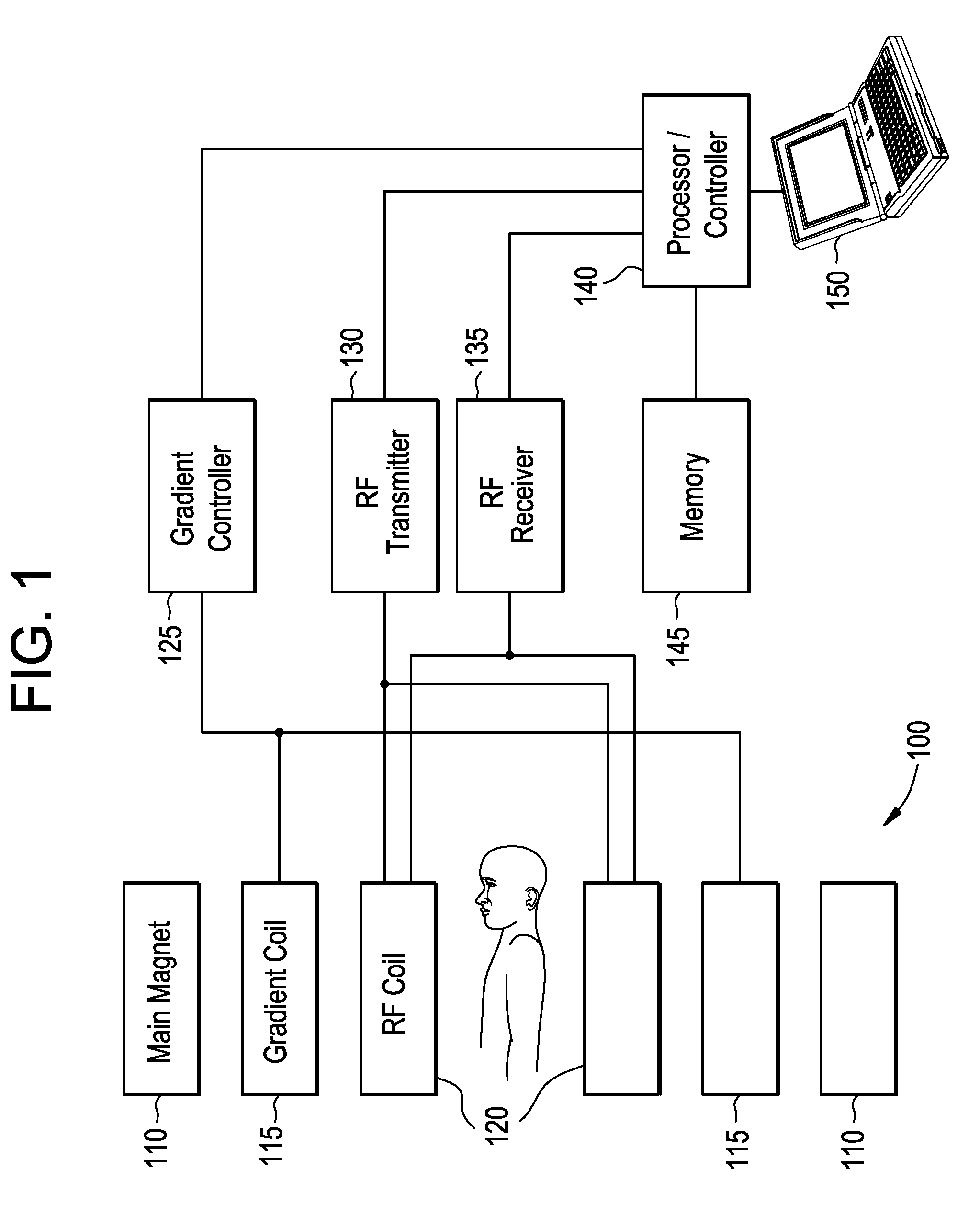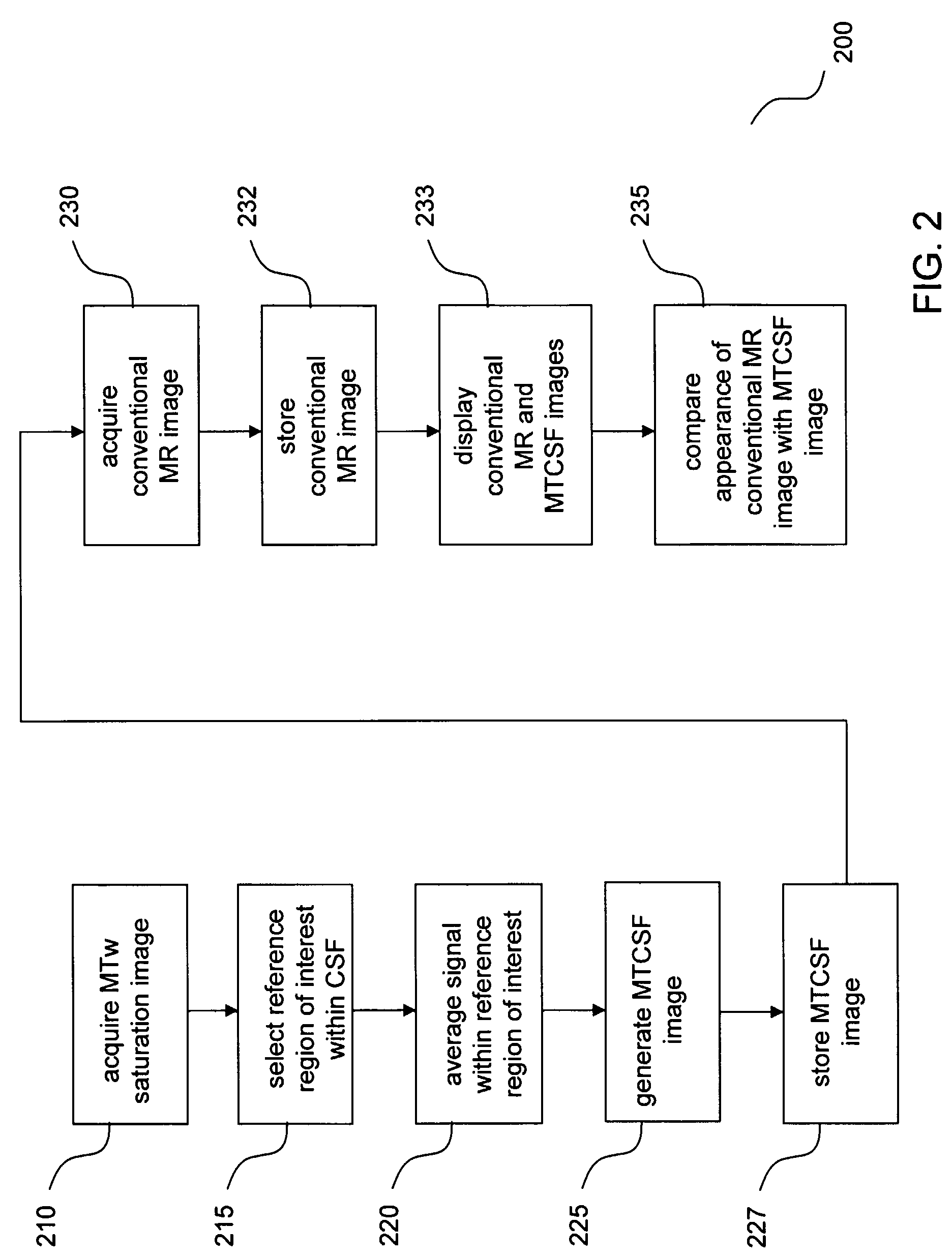Quantitative single image-based magnetization transfer weighted imaging using an inter-subject normalization reference within the image
a single image and weighted imaging technology, applied in the field of magnetic resonance imaging, can solve the problems of limiting the quality of computed mtr, uncertainty in correspondence, and inability to quantitatively track the progression of disease for a given patient with mtw imaging alone, and achieve the effect of early quantification
- Summary
- Abstract
- Description
- Claims
- Application Information
AI Technical Summary
Benefits of technology
Problems solved by technology
Method used
Image
Examples
Embodiment Construction
[0035]According to the present invention, an internally-referenced MTw image is generated, which is hereinafter referred to as an MTCSF image. An MTCSF image is generated on a voxel-by-voxel basis from a single acquired MTw image according to the following relation:
[0036]MTCSF=Mz(ω)〈CSF〉ROI(2)
where MTCSF is the magnetization transfer ratio using CSF as the internal intensity reference; Mz(ω) is the MR signal acquired at the RF saturation frequency, ω, wherein Mz corresponds to the signal intensity in a given voxel within the single image; ROI is the MR signal intensity averaged over a region of interest (ROI) corresponding to cerebrospinal fluid (CSF) and normalized per voxel. Cerebrospinal fluid serves as an effective reference because it has negligible magnetization transfer effect, which is common across subjects, and is temporally invariant. Accordingly, instead of performing a separate reference scan and registering the saturation image to such a reference image, a quantit...
PUM
 Login to view more
Login to view more Abstract
Description
Claims
Application Information
 Login to view more
Login to view more - R&D Engineer
- R&D Manager
- IP Professional
- Industry Leading Data Capabilities
- Powerful AI technology
- Patent DNA Extraction
Browse by: Latest US Patents, China's latest patents, Technical Efficacy Thesaurus, Application Domain, Technology Topic.
© 2024 PatSnap. All rights reserved.Legal|Privacy policy|Modern Slavery Act Transparency Statement|Sitemap



